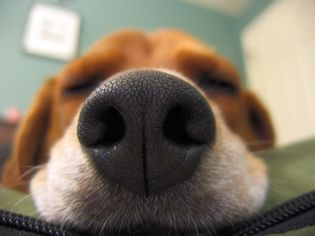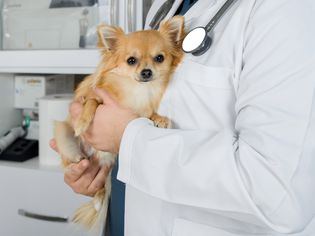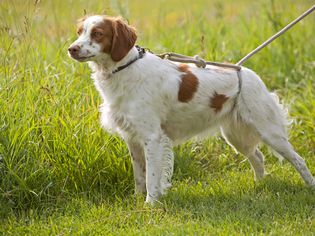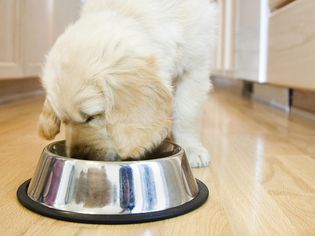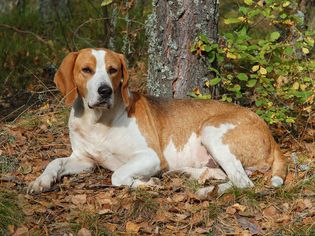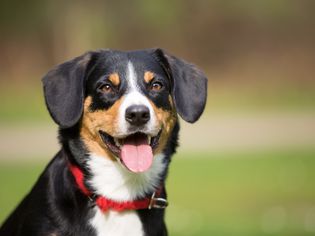It's very common for puppies and young dogs to get car sick from the motion, stress, and excitement. They may appear lethargic, whine, drool, cry, and ultimately throw up all over the back seat. It can happen for several reasons, ranging from stress and anxiety to genuine motion sickness.
Fortunately, most dogs grow out of this as they get used to riding in the car. Here are some ways you can relieve a puppy's upset tummy in the meantime or make their riding experience more comfortable.
Why Do Dogs Get Car Sick?
To ease your puppy's nausea, it's best to understand what may be causing it. Rest assured, though, that it's completely natural in young puppies and even some older dogs.
It’s really not surprising that some puppies don't like car rides. Any first experience can mean a ton of stress, fear, or excitement. Just like humans, dogs can throw up from these types of feelings. Rides are often associated with rude thermometers and needle pricks at the vet. This can leave your scared puppy dreading anything to do with a car, even if it's vacation travel to the boarding kennel or fun car rides around town.
Another reason puppies get car sick is due to true motion sickness. Movement can unsettle the fluids in dog ears and cause dizziness and motion sickness. This can occur in dogs of any age.
The good news is you can help train dogs to get used to car rides. Until that time, you can ease the upset feelings and settle the puppy's tummy with a little preparation.
Relieve Stress
Puppies associate sick feelings with what they anticipate will happen at the end of the ride. To change the dog's mindset, turn the car into a puppy palace of toys and treats the dog only gets while near or inside the car. In a very gradual way, teach your dog that the car offers lots of benefits. Treats, dog praise, and admiration can go a long way. Anxiety wraps and dog-appealing pheromones can be purchased in pet stores and help decrease feelings of anxiety.

The Spruce / Almar Creative
Time Meals
If the puppy has nothing in its tummy to vomit, it will be less likely to feel sick. Be sure to feed the dog several hours before you hit the road. Offer water, though, because it can help settle an iffy tummy.
Give Your Dog a View
The motion of a moving car without a view of the road can upset puppy tummies. Very tiny pups may not be able to see out the window, but when the dog is larger and able to window gaze, it has a way of getting oriented with the moving world.
Ensure the puppy is safely restrained in a safe puppy carrier or other restraint in the back seat. Loose dogs in the car run the risk of injury or death if an airbag deploys. Also, a puppy barrier or dog crate keeps your young dog out of your lap, safeguards you from becoming a distracted driver, and limits how much of a mess the puppy can make inside your car.
Fresh Air
Crack open the window for some fresh air for your puppy’s sniffing pleasure. All those fresh smells from the wind will distract the dog from any queasy tummy action. A narrow opening lets it sniff without risking eye injury from flying objects.
Also, you will want to stop and let the puppy stroll around for potty breaks during long car rides. Most dogs love to experience new places with their sense of smell. A potty or sniff break can help your puppy associate the car with fun new places and things to explore.

The Spruce / Almar Creative
How to Prevent Your Puppy From Getting Car Sick
If those suggestions do not work and your dog hasn't grown out of motion sickness, there are some remedies you can try.
The same drug people take to fight motion sickness works in dogs, too. Dramamine is considered safe for most healthy adult dogs. Be sure to check with your vet on the proper puppy dose, though, and make sure it won't interfere with any of your dog's medical conditions or other medications.
Ginger is a natural nausea remedy that you can try offering your dog. Ginger capsules are easy to find at health food stores and many drug stores. Puppies under 16 pounds can safely take 250 milligrams or less of ginger, while puppies over 16 pounds can usually handle up to 500 milligrams of ginger.
Additionally, you can offer your pup several types of dog-friendly gingersnap cookies. Eating cookies in the car can be a great positive association for the young dog, too. Be aware that the cookies can stain light fur if the pup munches and drools. Place a dog seat cover on the car seat to protect it from pieces of food, drool, and pet hair.


